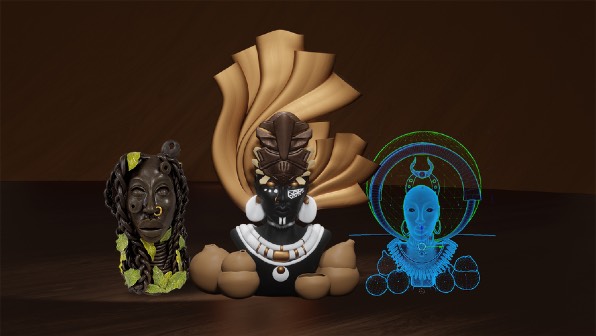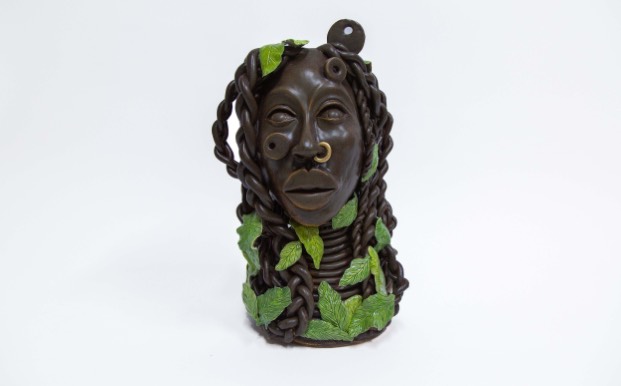By Asabe Mamza • October 2025
In a rapidly globalizing world, cultural heritage risks being diluted or lost entirely. For designers and artists working at the intersection of tradition and technology, the challenge extends far beyond preservation; it’s about revitalizing culture, reimagining it for the present, and ensuring it thrives in the future. In an era where culture is often reduced to hashtags and fleeting trends, artists and designers have become custodians of memory, multidisciplinary creators blending ancient craftsmanship with cutting-edge technology to produce work that transcends time and space.
I root my practice in utilizing modern design tools and practices with the stories, symbols, and practices of my homeland, expanding their reach through ceramics, digital painting, 3D modelling, and 3D scanning for AR/VR installations. Each medium becomes its own language: ceramics capture the tactile intimacy of handmade traditions, while 3D technologies and immersive environments allow these same narratives to inhabit virtual spaces. This is more than art — it is cultural activism. These works serve as living archives, ensuring that the textures, sounds, and stories of heritage remain vivid for future generations.

Using one of my recent bodies of work, the design approach draws inspiration from indigenous Northern Nigerian adornment practices such as Marghi hair braiding patterns and symbolic facial ornamentation. In physical form, these details are carved into clay, the clay was delicately hand-braided and painted with earthy pigments, embodying the grounded permanence of tradition. Digitally, they are scanned, modelled, and reimagined into interactive AR/VR environments informed by the physical sculptures, inviting viewers not just to see but to experience the cultural narrative in an entirely new dimension.
A viewer can now step inside an immersive world inspired by African traditions, walk among digital sculptures, or interact with patterns and motifs rooted in Indigenous knowledge systems. This isn’t just art, it’s a portal into collective memory.

This fusion is not merely aesthetic; it’s political, archival, and deeply personal. In a world where African culture has often been misrepresented or commodified, my work insists on authenticity, nuance, and agency through design. By embedding heritage into both tangible and digital forms, these design approaches serve as living archives, resisting cultural erasure while sparking new dialogues.
But why is this design approach gaining so much traction?
Because audiences crave connection, not just consumption.
Globally, there’s an exciting surge in multidisciplinary cultural preservation projects, from 3D-scanned museum collections to interactive VR storytelling. Yet, the uniqueness of this approach lies in how these design technologies are not simply tools for replication but vehicles for cultural transformation. Viewers step into layered experiences where history, memory, and imagination coexist.
The future of cultural preservation lies in collaboration between the physical and digital, between ancestral wisdom and contemporary design innovation. I hope that through this design thought process, audiences not only encounter cultural heritage but also carry it forward, embedding it into the evolving tapestry of global culture.
About Asabe Mamza
Asabe Mamza is a Nigerian-born, Canadian-based multidisciplinary artist and designer. Holding an Interdisciplinary Master’s in Art, Media, and Design from OCAD University, she bridges traditional African artistry with modern digital innovation. Through ceramics, painting, and immersive design technologies, she redefines how cultural narratives are preserved and experienced.
Website: asabemamza.com